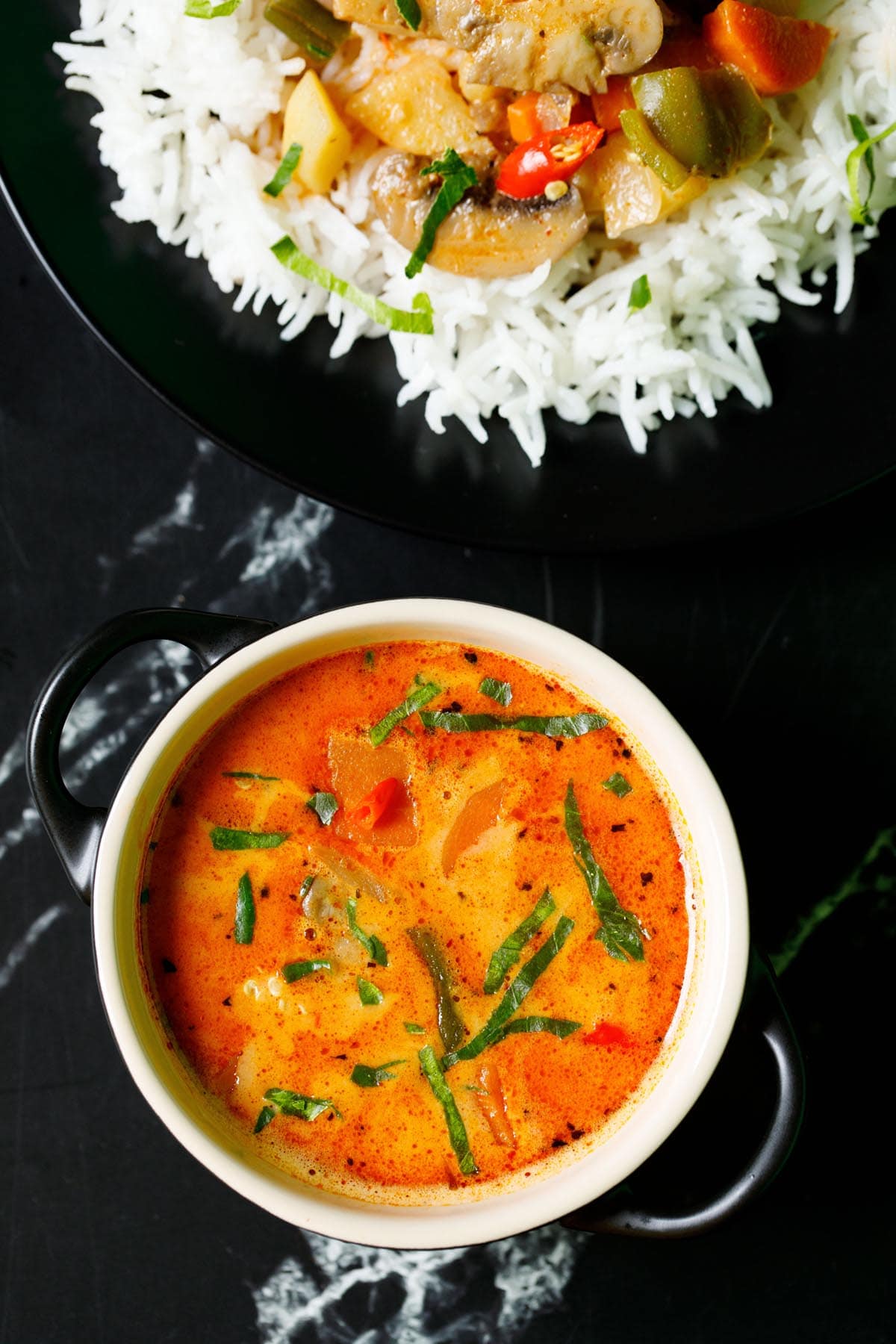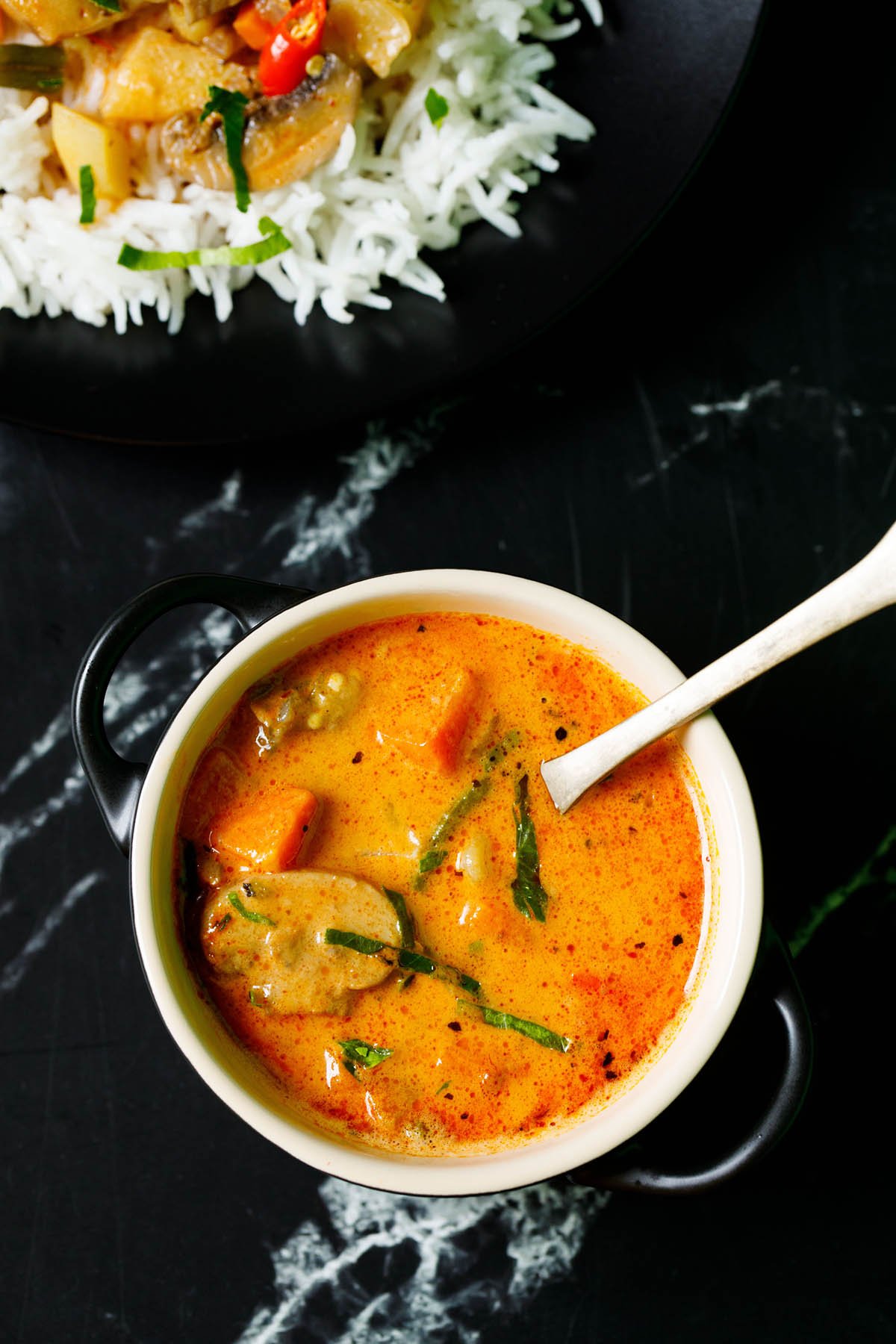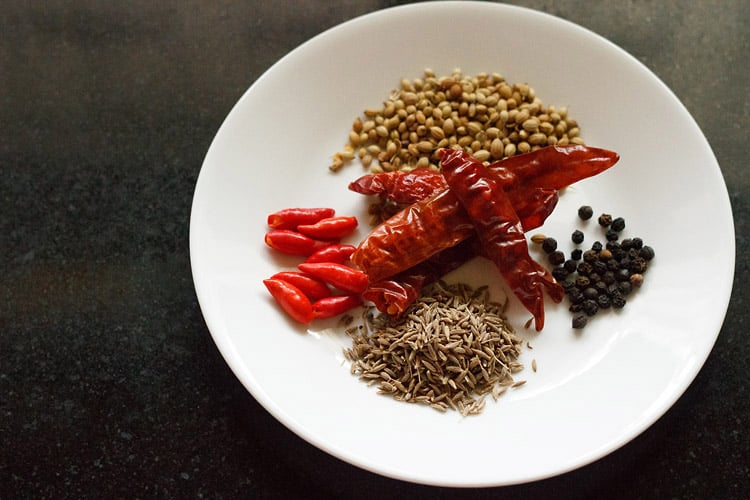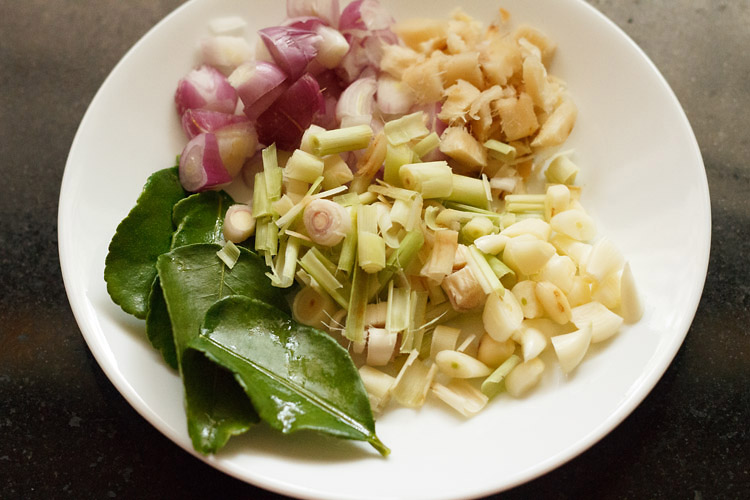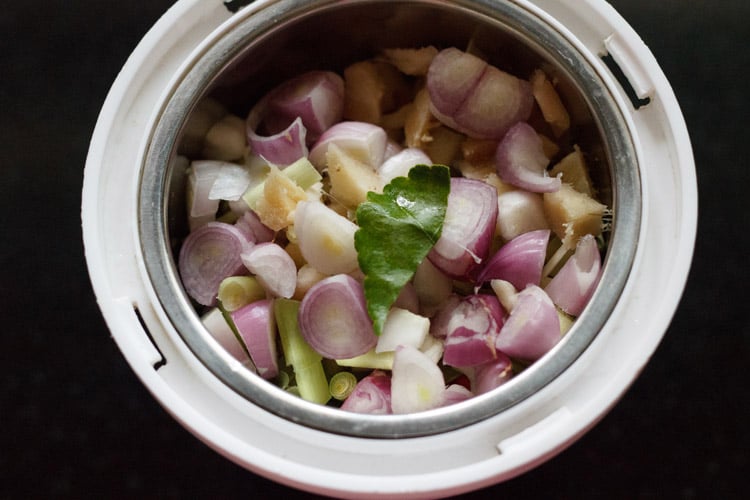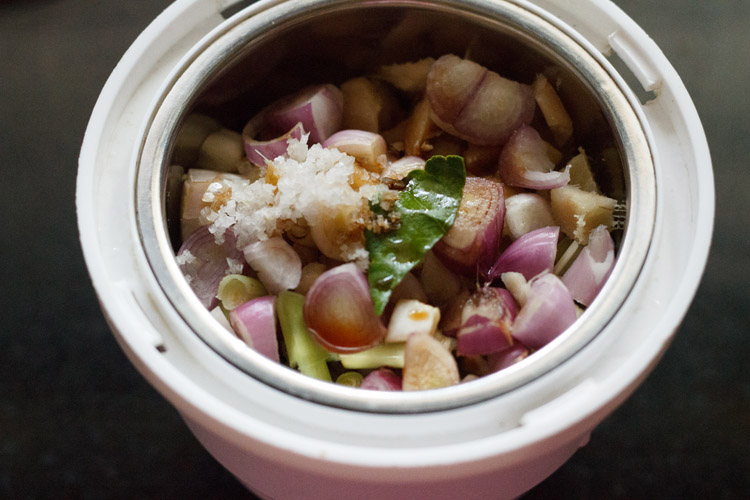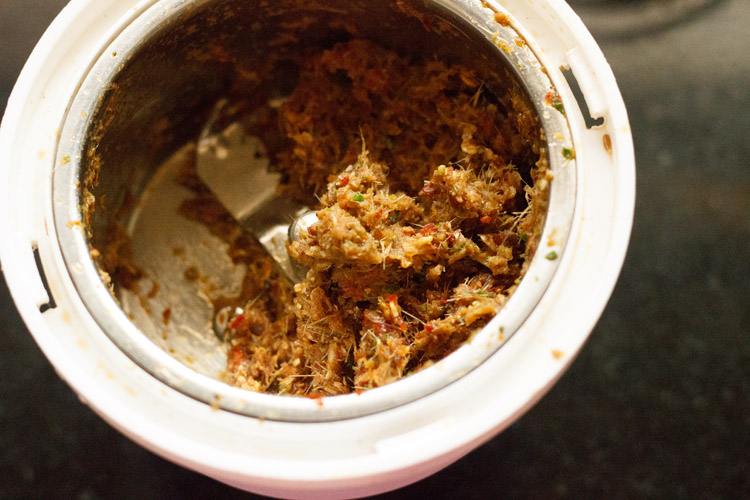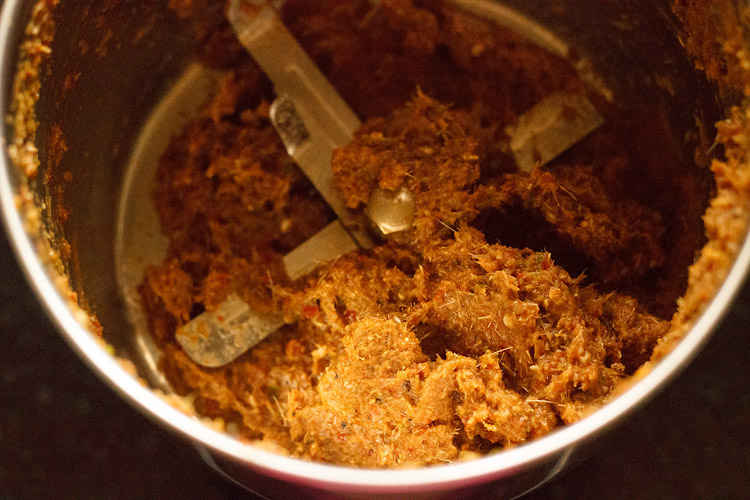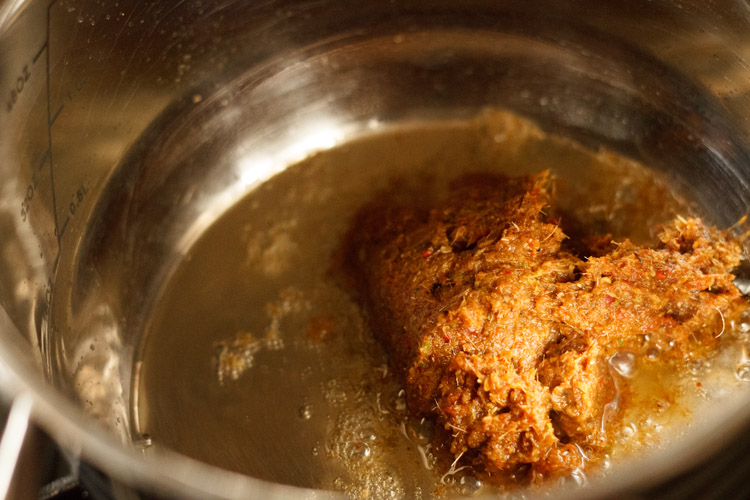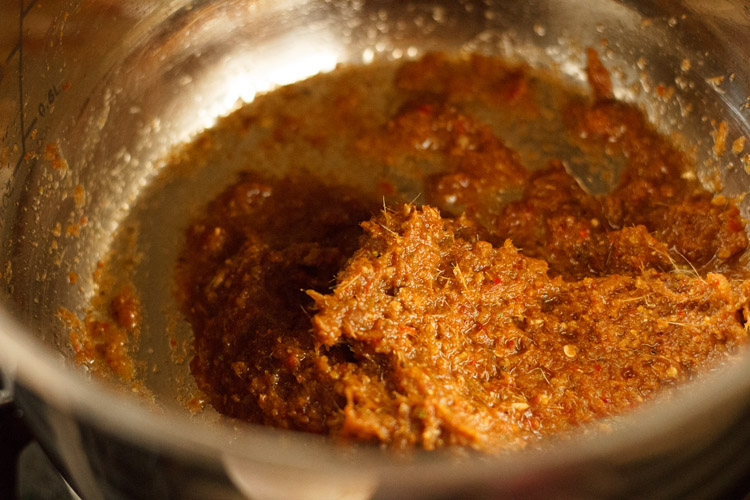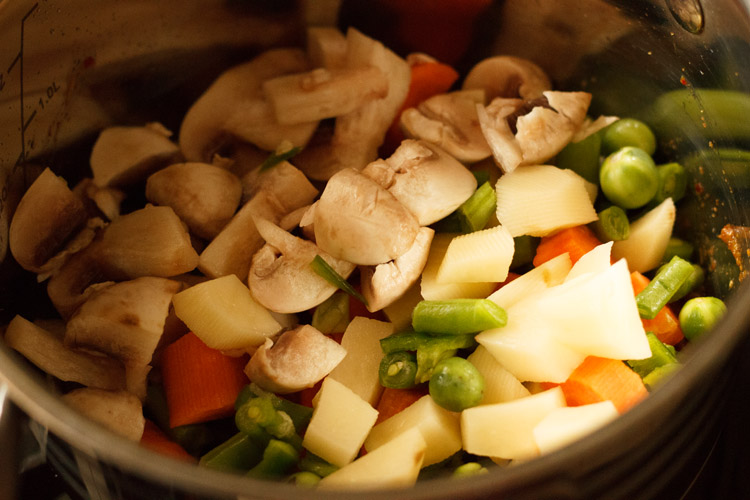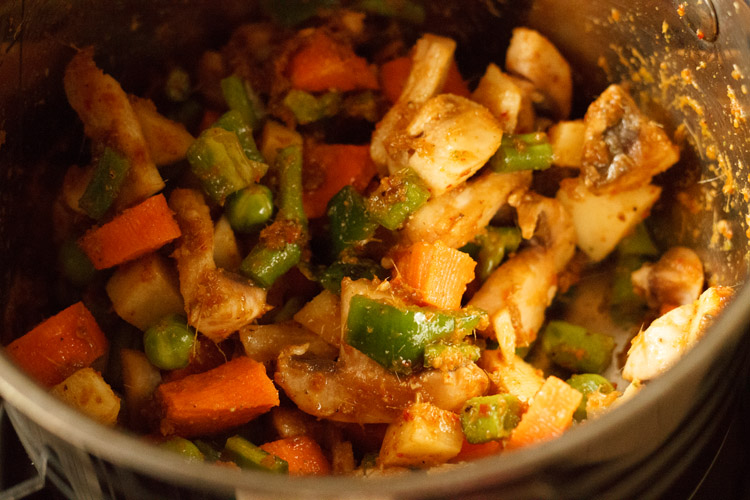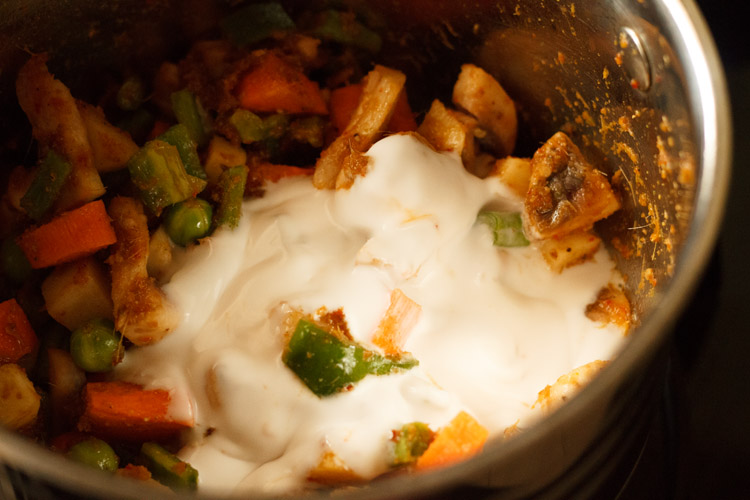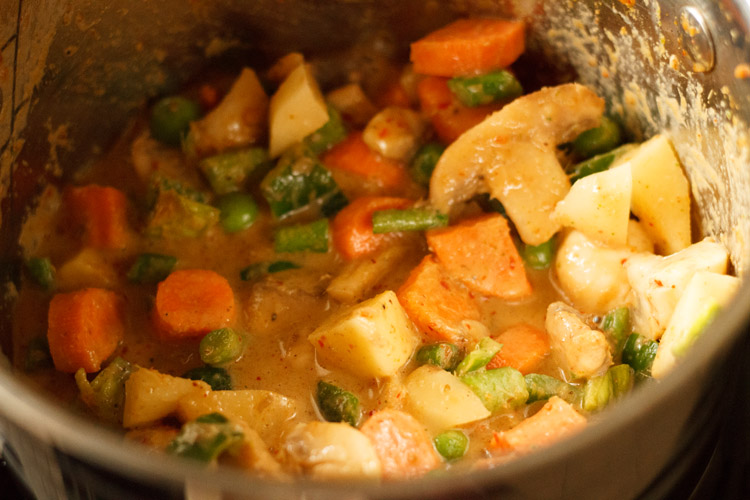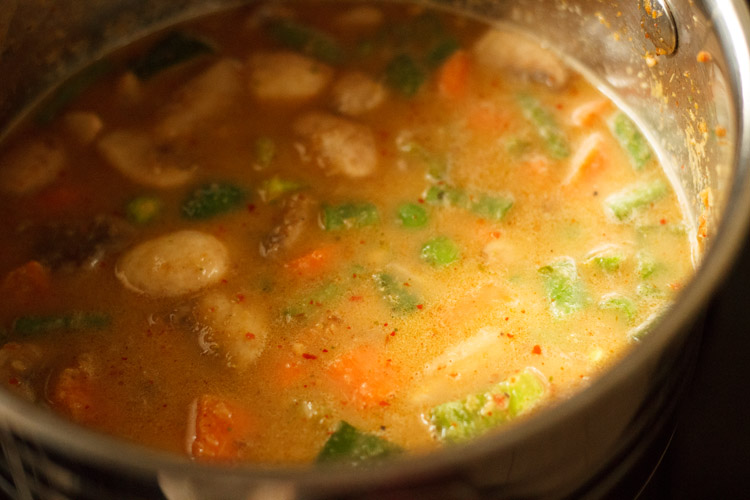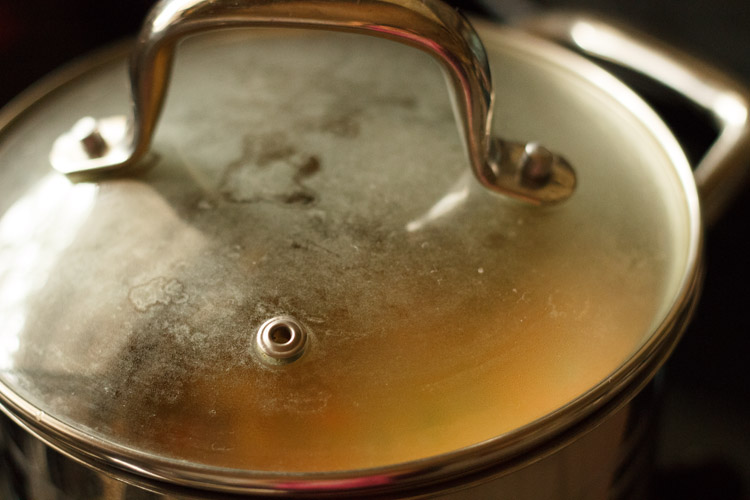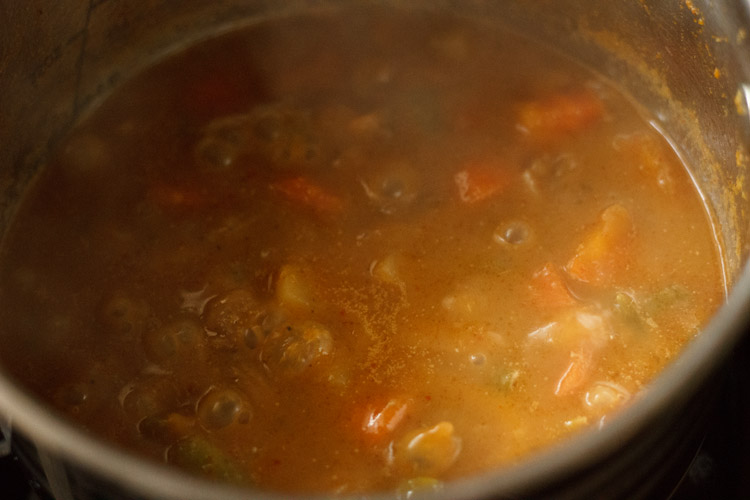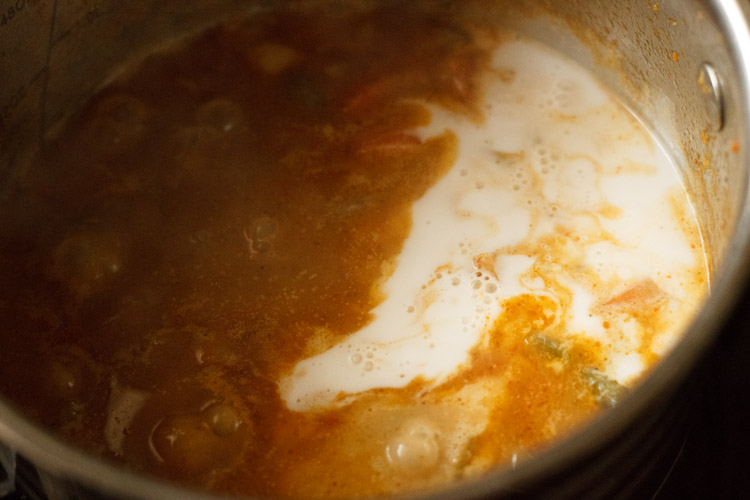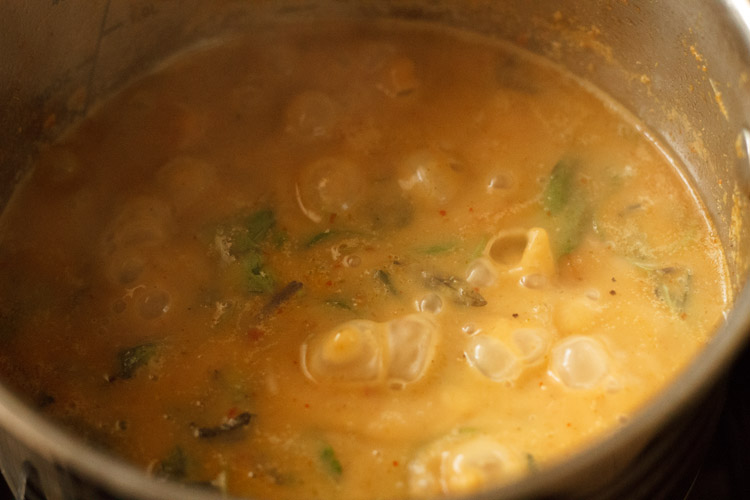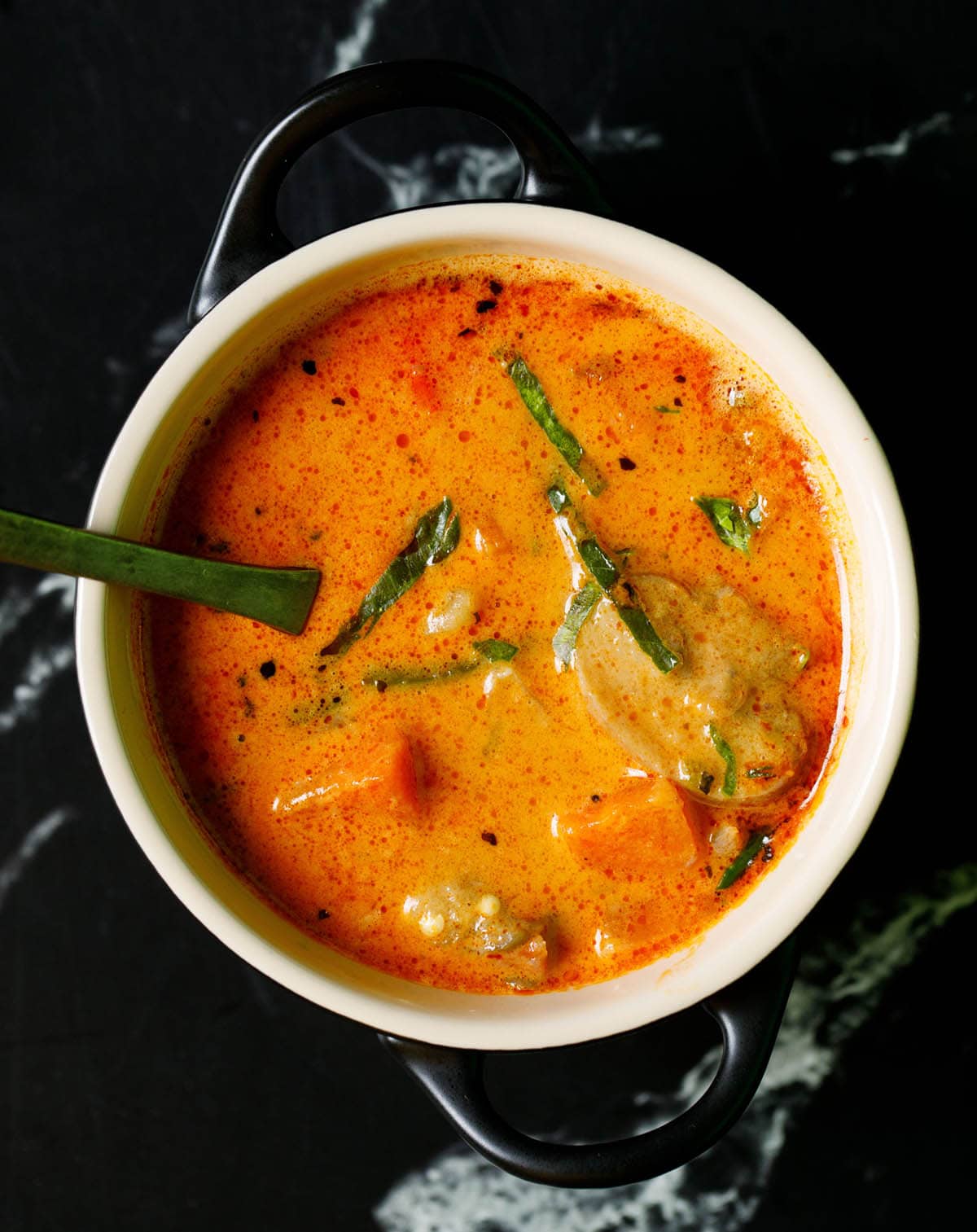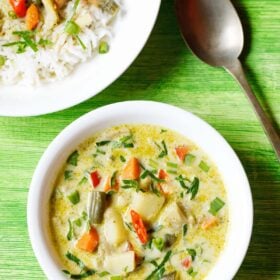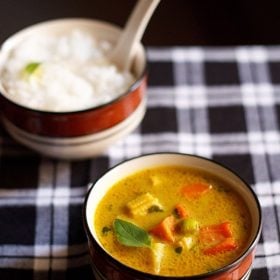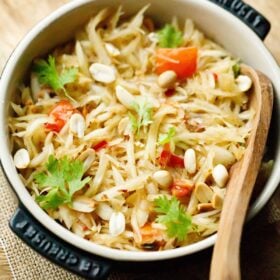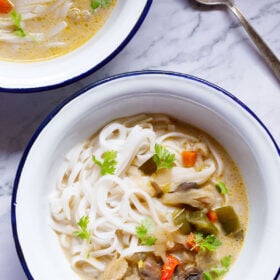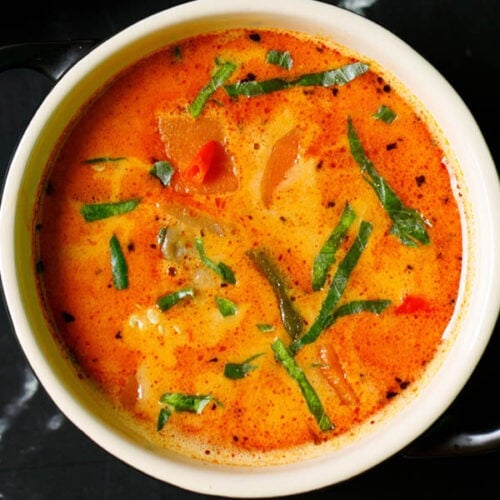About This Thai Curry Recipe
While I love cooking authentic Indian food, I truly enjoy cooking globally. I have been making this Thai curry for decades and it is a much-loved dish with my family. If you love Thai red curry and want to make some at home, give this recipe a try. Making your own homemade red curry paste is simple and straightforward, and it tastes so much more delicious than the shelf stable paste you can buy at market. Making your own Thai red curry paste is also a great way to ensure that your dish is preservative and additive free. While you can certainly use the store bought stuff in place of making your own, I highly recommend making your curry paste from scratch. While below I share the recipe for making the red curry paste that is sufficient for four servings of the curry. I also scale this same curry paste recipe and make a big batch to freeze.
Ingredients You Need
The authentic ingredients you will want to make this Thai red curry paste may not be familiar to you. Galangal, part of the ginger family, has a piquant and spicy flavor. Kaffir lime leaves impart a bright citrusy flavor, and lemongrass is a quintessential Thai ingredient. If you are unable to find any of these items, feel free to reference the section on “possible substitutes” below. Aside from those three Thai ingredients, everything else should be simple to find. Hot red chiles, coriander seeds, cumin seeds, peppercorn, soy sauce and coconut milk are pantry ingredients you should be able to find very easily. Finally, this dish is garnished with Thai basil. While you can substitute Italian basil, Thai basil has a specific flavor profile that will elevate your dish to a truly authentic level. If you can find it in your market, I recommend you purchase it for this dish.
How to make Thai Red Curry Paste
- Gather the following spices – 2 to 3 bird’s eye chilies, 2 dry red chillies, 2 teaspoons coriander seeds, 1 teaspoon cumin seeds and ¼ teaspoon black peppercorns. The photo below is only to show you the spices.
- Rinse, peel and roughly chop the following herbs – 1 inch galangal, 4 to 5 small garlic cloves (or 2 to 3 medium garlic cloves), 1 to 2 shallots, 3 to 4 medium kaffir lime leaves (chopped) and 2 lemongrass stalks.
- Place the spices, herbs, shallots in a grinder jar, food processor or blender.
- Add 1 teaspoon naturally fermented soya sauce, ½ teaspoon lemon zest (optional) and 2 tablespoons water or coconut milk. Also add ½ teaspoon salt or as per taste. Note to make a large batch of this red curry paste, using water to blend will ensure a longer shelf life of the paste if you freeze it.
- Begin to grind or blend the red curry paste ingredients. Scrape the sides and continue to grind to a fine or semi-fine paste.
- I switched to another grinder jar as the first one was not doing a good job of grinding well. I am keeping this photo so that you can see the consistency of the curry paste.
How to make Thai Red Curry With Vegetables
Sautéing Curry Paste
- In a pot or pan, heat 2 tablespoons toasted sesame oil or coconut oil. Keep flame to a low. Add all of the prepared thai red curry paste.
- Sauté for a minute on a low flame stirring often. It will smell beautifully fragrant.
Adding Vegetables
- Add 2 to 2.25 cups of chopped veggies and white button mushrooms. Stir and mix everything. Here I have included the following veggies:
⅓ or ½ cup chopped carrots ⅓ cup chopped baby corn 1 cup chopped button mushrooms ¼ or ⅓ cup chopped capsicum (or any colored bell pepper) ¼ cup french beans 1 cup chopped cauliflower 10 to 12 Thai pea eggplant (turkey berry)
Tip: You can add your choice of vegetables, but keep in mind that certain veggies like zucchini and capsicum require much less cooking and might be better added nearer to the end of cooking. I usually add capsicum at this step. But if you prefer you can add it later. 4. Stir and mix everything. 5. Now add ½ cup thick coconut milk and mix again. Keep heat to a low. 6. Mix again. Keep heat to a low. 7. Now add about 1.5 cups water and mix again. Since salt was added in the Thai red curry paste, you may not need to add any more. Check the flavor after the dish is cooked. If you prefer a thicker consistency in the curry then add less water. You can also use homemade vegetable stock instead of water. Tip: When thinking about salting dishes like soups or curries that will evaporate while cooking, be sure to abstain from adding additional salt until the desired consistency is achieved. This is because while water will evaporate, but the salt will not. If you season for your desired flavor before the water is allowed to dissipate, you will risk over-salting the dish.
Making Thai Curry
- Cover the pan with its lid and increase the heat to medium-low. Simmer the curry till the vegetables are cooked through and tender.
- Check the curry occasionally while the veggies are cooking. If the water dries up, you can always add more.
- When the vegetables are cooked and tender, then reduce the flame to a low and add ½ cup thick coconut milk. You can opt to keep the vegetables slightly al dente if you prefer. At this step, you can also add ¼ teaspoon palm sugar or unrefined cane sugar. The addition of sugar is optional and can be skipped. For a slightly more sweet taste, you can increase the amount of sugar.
- Mix very well and let the entire curry come to a boil on a low or medium-low flame. Lastly, add 1 tablespoon chopped or torn thai basil leaves. Mix and switch off the heat. Check the taste of the curry, and if necessary, add some salt.
Serving Suggestions and Leftovers
Serve the Thai red curry hot with lemongrass rice, plain steamed basmati rice or jasmine rice. Basil leaves are a beautiful garnish, if you so desire. Store any leftover curry in the refrigerator for a day. Reheat in a skillet or pan adding some water if the curry has thickened.
Possible Substitutes for Thai ingredients
While it is suggested that you use all of the authentic Thai ingredients in the recipe, I understand that sometimes you may not have access to everything. Living in Goa and making this recipe was my first hand experience with not being able to purchase some of my favorite Thai ingredients. These are the substitutes I recommend, but please note that the flavors of the Thai red curry will be affected. While the resulting curry will still taste delicious, it will not be authentic.
Galangal: use fresh ginger Kaffir lime leaves: substitute lime leaves or zest of lemon Thai chilies: substitute fresh or dried red chilies Shallots: use small onions or pearl onions instead Thai basil: Italian basil leaves can be used Lemon grass: unfortunately, there really is no comparable substitute to lemongrass. At best, you could use zest of lemon, but you will miss out on lemongrass’s distinctive floral flavor.
If too many ingredients are missing from your market, you can also opt to use store bought Thai red curry paste. I recommend using 3 to 4 Tablespoons in place of the homemade recipe. Please be sure to rate the recipe in the recipe card or leave a comment below if you have made it. For more vegetarian inspirations, Sign Up for my emails or follow me on Instagram, Youtube, Facebook, Pinterest or Twitter. Easy Thai Green Curry with Vegetables Thai Yellow Curry Recipe Green Papaya Salad (Som Tam) Tom Kha Soup (Thai Coconut Soup) This Thai Curry recipe post from the archives was first published in Feb 2011. It has been updated and republished on June 2021.
